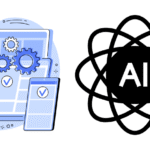 Flutter vs React Native – Deciding between Flutter and React Native? Compare their development speed, ease of use, and ecosystem strengths to determine which best suits your project’s needs.
Flutter vs React Native – Deciding between Flutter and React Native? Compare their development speed, ease of use, and ecosystem strengths to determine which best suits your project’s needs.
In today’s business environment, cross-platform development has become crucial for companies looking to expand their reach and target multiple platforms.
Flutter and React Native have emerged as popular frameworks that offer developers a way to build high-performance, multi-platform apps with a single codebase.
However, choosing the right framework can be a daunting task, with each having its strengths and weaknesses.
This article aims to provide an in-depth comparison of Flutter and React Native, highlighting their features, performance, community support, and suitability for different use cases. By the end of this article, you’ll have a better understanding of which framework is suitable for your multi-platform project requirements.
Key Takeaways
- Flutter and React Native are popular cross-platform frameworks for multi-platform development projects.
- Choosing the right framework is essential to ensure app scalability, maintainability, and performance.
What is Flutter?
Is a free and open-source UI software development kit created by Google. It allows developers to build natively compiled applications for mobile, web, and desktop platforms.
Flutter uses the Dart programming language, which is known for its fast execution and allows for the creation of high-performance apps with a single codebase. With Flutter, developers can create visually attractive and responsive apps with its extensive library of customizable widgets, animations, and themes.
Flutter also offers convenient features for cross-platform development such as Hot Reload for faster development and debugging, and a rich set of pre-built widgets for quick and easy UI creation.
Flutter is an excellent choice for cross-platform development, as it provides a streamlined, efficient experience for developers and produces high-quality, fast-performing apps.
What is React Native?
Is an open-source framework for building high-performance mobile applications for iOS, Android, and other platforms using JavaScript. It was developed by Facebook in 2015 and quickly gained popularity among developers due to its ability to enable cross-platform development with a native feel.
React Native allows developers to build mobile applications using a single codebase, making it a cost-effective and time-saving option for cross-platform development. It leverages the power of JavaScript and React to create efficient and responsive UI components that can be shared across multiple platforms.
The key advantage of React Native is its ability to use native components, providing a native-like experience to users. It also supports third-party plugins and libraries, making it easier to incorporate additional features such as in-app purchases, push notifications, and social media integration.
React Native is well-suited for developing applications that require heavy UI components and dynamic data. It offers a vast collection of pre-built UI components that can be customized to suit specific design requirements. It also provides a development environment that is familiar to web developers, making it an accessible option for developers with a background in React or JavaScript.
Overall, React Native is a reliable choice for cross-platform app development, offering a robust framework for building high-quality mobile applications with a native feel.
Performance Comparison
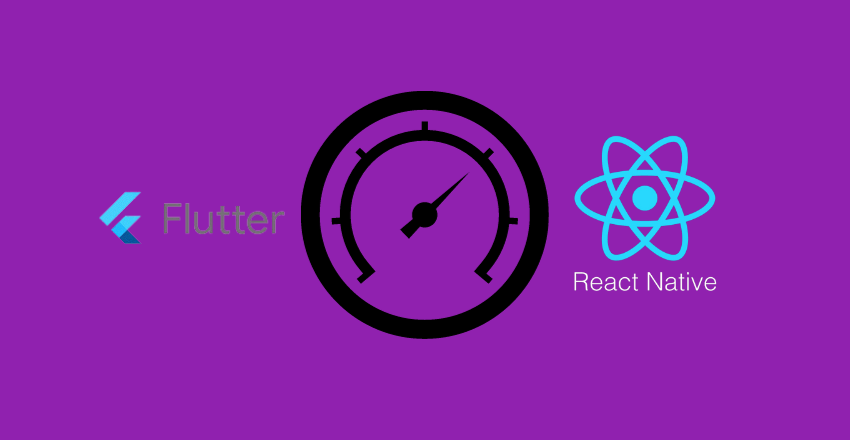
When it comes to performance, both Flutter and React Native offer impressive capabilities. However, there are some key differences that may impact your decision on which framework to choose.
One of the main advantages of Flutter is its ability to create highly performant apps with a single codebase. Flutter uses its own rendering engine, Skia, which allows it to achieve impressive app startup time, UI responsiveness, and rendering speed. This is because Flutter compiles its Dart code into native machine code, rather than relying on JavaScript bridge like React Native does.
React Native, on the other hand, uses a JavaScript-based approach that leverages native components to achieve app performance. While this approach can result in a slightly slower startup time, it does offer benefits such as hot-reloading and faster development cycles.
| Flutter | React Native | |
|---|---|---|
| App Startup Time | Fast | Slightly slower |
| UI Responsiveness | Highly Responsive | Responsive |
| Rendering Speed | Fast | Fast |
Ultimately, the performance differences between Flutter and React Native may not be significant enough to sway your decision one way or the other. It’s important to consider the specific needs of your app and choose the framework that best fits those requirements.
Development Environment
One of the fundamental aspects of cross-platform frameworks is the development environment required to create and test apps. In this section, we explore the software development kits (SDKs), Integrated Development Environments (IDEs), and other tools necessary for creating apps with Flutter and React Native.
Flutter Development Environment
It has a self-contained development environment that comes with everything needed to build, test, and debug applications. To get started with Flutter, developers must install Flutter’s SDK, which includes the Flutter engine, a set of core widgets, and a command-line interface for managing projects.
Flutter supports two primary IDEs, Android Studio and Visual Studio Code. Both IDEs come with Flutter plugins and extensions that provide features such as code autocompletion, debugging, and hot reload. Developers can also use other IDEs with Flutter, such as IntelliJ IDEA or Emacs, but these require additional configuration.
React Native Development Environment
It requires a few more steps to set up the development environment compared to Flutter. Developers must first install Node.js, a JavaScript runtime, and then the React Native CLI, which enables the creation of new React Native projects. React Native also requires Xcode, Android Studio, or Visual Studio to build the native code that interacts with the device’s hardware.
React Native’s primary IDE is Visual Studio Code, which offers a rich set of tools for React Native development, including IntelliSense, debugging, and hot reloading. Other IDEs, such as Atom, Sublime Text, and WebStorm, can also be used with React Native using appropriate extensions and plugins.
UI Development: Flutter vs React Native
Both Flutter and React Native have robust UI development capabilities, offering a vast array of widgets and components to create visually appealing and responsive interfaces. However, there are some differences in their approaches and available features.
Flutter:
It provides a rich set of Material Design and Cupertino widgets, which can be customized to match any design specification. Additionally, Flutter offers a flexible layout system that allows for both absolute and relative positioning of widgets, making it easy to create complex layouts. Flutter’s hot reload feature also streamlines the development process, allowing for real-time UI updates.
Furthermore, Flutter provides extensive support for animations and graphics, allowing for the creation of rich and engaging user experiences. This is possible due to Flutter’s rendering engine, which enables high-performance graphics and fluid animations.
React Native:
It offers both built-in and third-party UI components, including a range of customizable buttons, forms, and navigation elements. React Native’s Flexbox layout system is based on CSS, making it easy to understand and use for developers familiar with web technologies. Additionally, React Native’s UI components are highly modular and can be easily combined and reused across different parts of the app.
React Native also offers support for animations and graphics, although its performance in this area may not be as good as Flutter, depending on the complexity of the animation or graphic.
Both Flutter and React Native offer powerful UI development capabilities, with some differences in their approaches and available features. The choice between the two will depend on the specific needs and requirements of the app being developed.
Native Features Integration
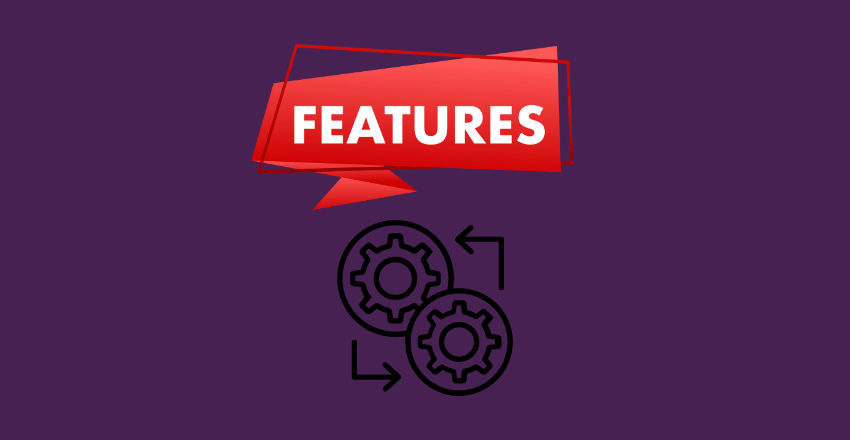
When it comes to native features integration, both Flutter and React Native offer robust capabilities for accessing device APIs, sensors, and other native functionalities. However, there are notable differences in the approaches taken by each framework.
Flutter provides a comprehensive suite of plugins and packages for easily integrating with native features, including camera, geolocation, and contacts. Additionally, Flutter allows for the creation of custom plugins for any native feature that does not have an existing plugin.
On the other hand, React Native uses a different approach and relies heavily on third-party libraries and modules for accessing native features. This approach can result in a more fragmented ecosystem, with varying levels of support and compatibility for different devices and platforms.
Overall, both frameworks offer solid options for integrating native features, but Flutter’s comprehensive plugin system and ability to create custom plugins give it an edge over React Native.
Community and Ecosystem
One of the key factors to consider when choosing a cross-platform framework is the community and ecosystem supporting it. Both Flutter and React Native have established and active developer communities, offering extensive documentation and support.
Flutter has gained significant traction in recent years, with Google’s backing and investment. The Flutter community is growing rapidly, with thousands of packages and plugins available in the official Flutter package repository. It offers a rich ecosystem with advanced features such as hot reload, stateful hot reload, and customizable widgets.
React Native, on the other hand, has a larger community and ecosystem due to its longer existence. It has a robust package repository, with thousands of open-source libraries and plugins created and maintained by developers worldwide. React Native also has the backing of Facebook, which provides extensive documentation, support, and updates.
Both communities have their strength and weaknesses, and ultimately the choice depends on the specific needs of the project and the familiarity of the developers with the framework. However, the active and supportive communities of both Flutter and React Native ensure that developers have access to the necessary resources to create high-quality cross-platform apps.
Learning Curve: Flutter vs React Native
When it comes to comparing the learning curves of Flutter and React Native, there are several factors to consider. Let’s take a closer look at each framework and what it takes to get started.
Flutter
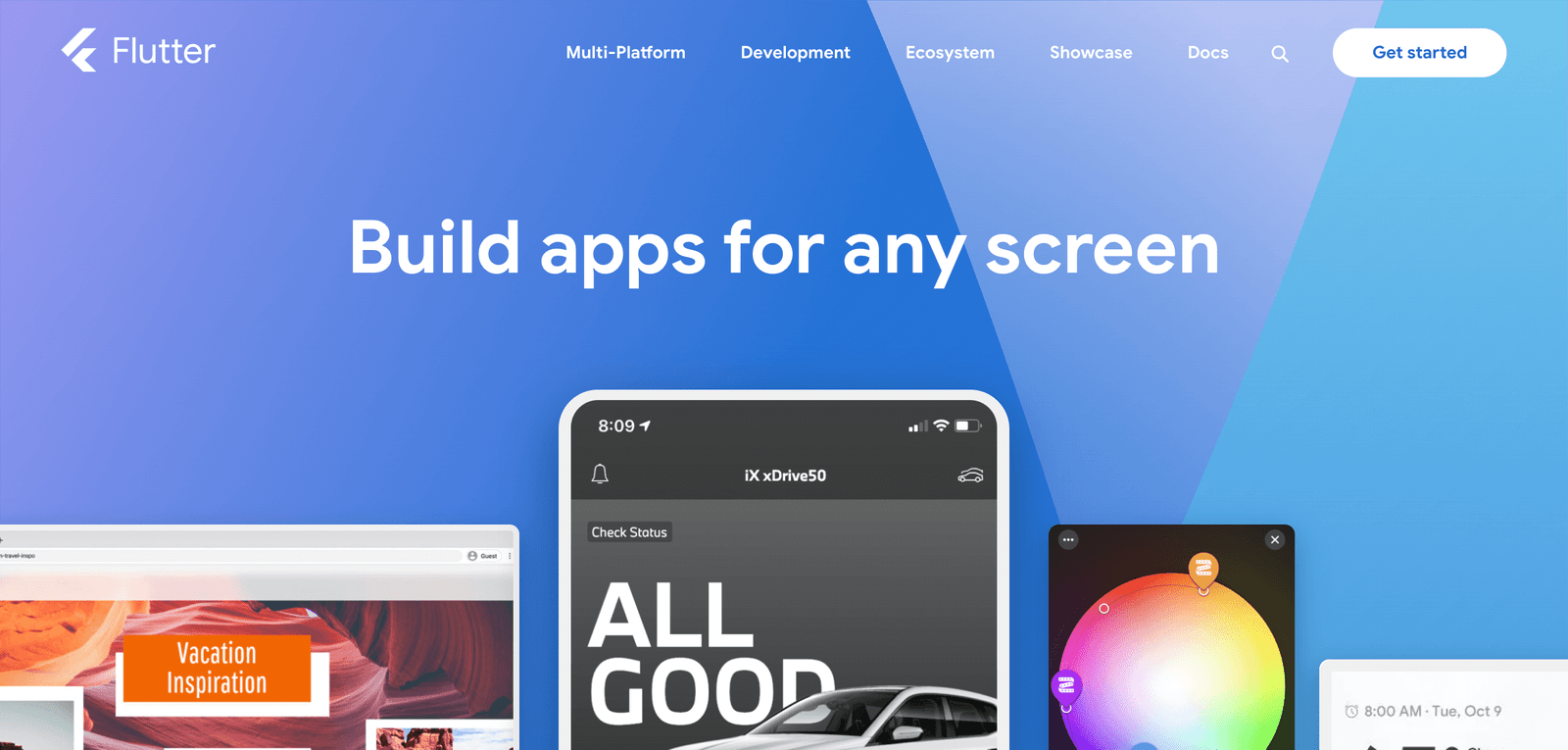
It uses Dart as its programming language, which may be unfamiliar to many developers. However, Dart has similarities to other popular programming languages like Java or C#, making it relatively easy to learn for some. Flutter also has an extensive documentation library that covers everything from widget customization to layout creation, which makes it easier for developers to learn and get started on projects quickly. Additionally, Flutter offers a rich set of tools, including the Flutter Inspector, which enables developers to debug and visualize their UI layouts efficiently.
React Native
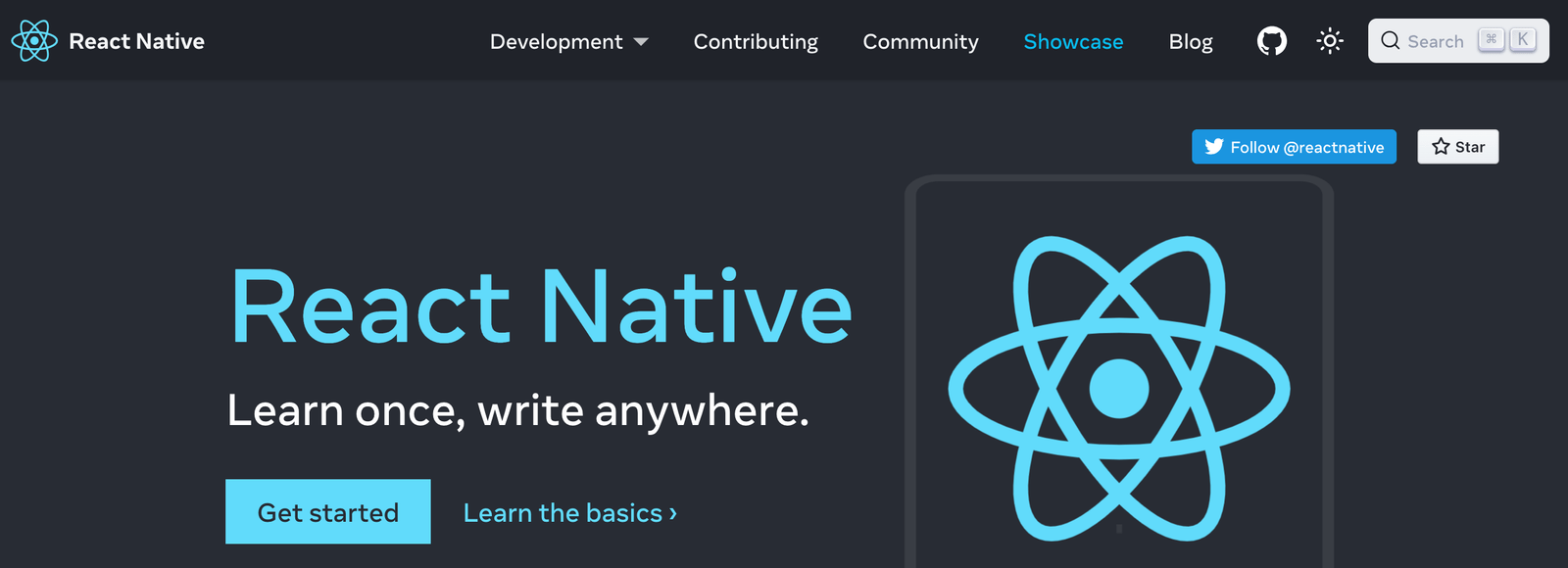
Is based on JavaScript, which is familiar to many developers, making it relatively easy to learn for those with JavaScript background. React Native has an extensive documentation library that covers everything from setting up the development environment to advanced topics like animations. Additionally, React Native has a large community of developers, which provides a wealth of resources and support for new users.
Overall, both frameworks have relatively low learning curves, especially for developers with prior experience in programming. However, the familiarity of the programming language and the available resources can make a significant difference in the learning process.
Documentation and Support

When it comes to documentation and support, both Flutter and React Native offer extensive resources to developers. However, there are some differences in the quality and accessibility of these resources.
Flutter provides comprehensive documentation that covers all aspects of the framework, from getting started to advanced topics. The official Flutter website offers a wide array of resources, including tutorials, guides, API references, and samples. The documentation is well-organized, easy to navigate, and frequently updated to reflect the latest changes to the framework. Additionally, the Flutter community is highly active and offers ample support through forums, social media, and developer groups.
React Native also provides robust documentation that covers the majority of the framework’s features and use cases. The official website features a searchable API reference, guides, and tutorials. However, the documentation can be fragmented and challenging to navigate. The React Native community is also active and offers support through various channels, such as StackOverflow, Reddit, and GitHub. However, the volume of support requests can sometimes lead to delays in receiving help.
Industry Adoption: Flutter vs React Native
When it comes to the adoption of cross-platform frameworks, both Flutter and React Native have been gaining popularity among developers and businesses alike. While React Native has been around since 2015 and is backed by Facebook, Flutter is a relatively new player that was introduced by Google in 2017.
Despite its shorter time on the market, Flutter has quickly gained traction, especially among startups and small to medium-sized businesses. In contrast, React Native has a more established community and is widely used by large corporations and enterprises, including Facebook, Instagram, and Airbnb.
| Framework | Industry Adoption |
|---|---|
| Flutter | Popular among startups and small to medium-sized businesses |
| React Native | Adopted by large corporations and enterprises |
However, it’s worth noting that both frameworks have been used to build successful and high-profile apps. For instance, React Native was used to develop apps for Walmart, Tesla, and Skype, while Flutter was used to build apps for Google Ads, Alibaba, and Reflectly.
Overall, the industry adoption of Flutter and React Native is dependent on various factors, such as the project’s requirements, target audience, and available resources.
Scalability and Maintainability
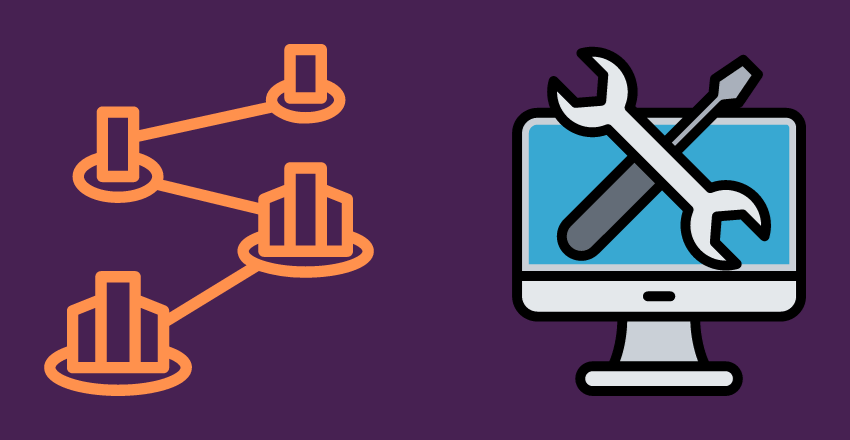
When it comes to scalability and maintainability, both frameworks have their strengths and weaknesses.
Flutter boasts a single codebase, meaning developers only have to write code once for both iOS and Android. This saves time and resources in the development process, and also reduces the chances of inconsistencies in the app’s behavior across platforms. However, as the app grows larger and more complex, the codebase can become difficult to manage and navigate. There is also a lack of established guidelines and best practices for separating concerns and organizing code, which can affect maintainability over time.
React Native provides a component-based architecture that allows for greater code modularity and reusability. This makes it easier to manage and maintain the codebase, even as the app grows larger. Additionally, the framework’s use of JavaScript and the familiarity of the language to many developers means that it can be easier to find talent and keep a consistent development team. However, this may result in a reduction in app performance and an increase in app startup time.
Use Cases and Best Fit
When it comes to choosing between Flutter and React Native, the decision often boils down to the specific use case and requirements of the project. Both frameworks have their own strengths and weaknesses, making them better suited for certain types of apps.
Flutter is ideal for developing performance-intensive apps that need to run smoothly across multiple platforms. Its reactive programming model and “hot reload” feature make it easier to iterate on UI design and functionality. Additionally, Flutter’s extensive widget library and customizable UI options make it a great choice for building visually stunning apps.
On the other hand, React Native’s strength lies in its JavaScript-based approach and support for leveraging native components. This makes it a suitable choice for projects that require heavy native integrations or are focused on building a highly interactive user interface. React Native also has a large and active developer community, with numerous libraries and plugins available for additional functionality.
Ultimately, the best fit for your project depends on a number of factors, including development timeline, budget, scalability, and performance requirements. Consulting with an experienced cross-platform development team can help you make an informed decision and choose the framework that aligns with your project goals.
Conclusion: Flutter vs React Native
After evaluating the features, performance, community support, and suitability for different use cases of both Flutter and React Native, we can conclude that both frameworks have their pros and cons. Flutter’s hot reload and excellent UI capabilities make it a great choice for building visually stunning apps. React Native’s JavaScript-based approach and native component usage make it a go-to for organizations already using web technologies.
Both frameworks have their own learning curve, development environment requirements, and support communities. It ultimately comes down to the specific needs of each project to determine which framework is best suited for the job.
Hire Cross Platform for your App Development Needs
Looking for a reliable team of cross-platform app developers in South America? Look no further than Hire Cross Platform. Our team of experts specializes in both Flutter and React Native development, ensuring that we can provide the right solution for your project’s needs.
Outsourcing your app development to Hire Cross Platform offers many benefits, including cost savings, access to a skilled and experienced team, and the ability to focus on your core business while we take care of the technical details. Our team is dedicated to delivering high-quality apps that meet your requirements and exceed your expectations.
Whether you’re looking to build a performance-intensive app, a UI-centric app, or an app requiring native integration, our team has the expertise to deliver the right solution. Contact us today to learn more about our services and how we can help you achieve your app development goals.
External Resources
https://www.codecademy.com/article/introduction-to-javascript-runtime-environments
FAQ

Q: What is the difference between Flutter and React Native?
A: Flutter and React Native are both cross-platform frameworks used for app development. However, Flutter uses its own rendering engine and widgets, while React Native uses native components. Additionally, Flutter apps are written in Dart, while React Native apps are written in JavaScript.
Q: Which framework is better for multi-platform development?
A: Both Flutter and React Native are popular choices for multi-platform development. Flutter offers a single codebase and high-performance apps, while React Native leverages native components for a more native-like experience. The choice depends on the specific requirements and preferences of the project.
Q: Does Flutter have better performance than React Native?
A: Flutter is known for its excellent performance, offering fast app startup time, responsive UI, and smooth animations. React Native also provides good performance, but some developers find that Flutter delivers a more consistent and smoother experience overall.
Q: What development environments are required for Flutter and React Native?
A: For Flutter development, you need to set up Flutter SDK, Dart SDK, and an IDE like Visual Studio Code or Android Studio. React Native development requires Node.js, the React Native CLI, a code editor like Visual Studio Code, and either Android Studio or Xcode for device emulation.
Q: How do Flutter and React Native compare in terms of UI development?
A: Flutter and React Native both offer rich UI development capabilities. Flutter provides its own set of customizable widgets and a flexible layout system, while React Native leverages native UI components. Both frameworks allow for creating visually appealing and responsive interfaces.
Q: Can Flutter and React Native integrate native features?
A: Yes, both Flutter and React Native support the integration of native features. They provide access to device APIs, sensors, and native functionalities. Flutter uses platform channels for communication between Flutter and native code, while React Native utilizes Native Modules.
Q: What is the community and ecosystem like for Flutter and React Native?
A: Flutter and React Native both have active and growing communities. Flutter has a smaller community compared to React Native, but it is rapidly expanding. Both frameworks have a wide range of libraries, plugins, and community support available.
Q: Are Flutter and React Native easy to learn?
A: The learning curve for Flutter and React Native depends on the developer’s familiarity with the respective programming languages (Dart for Flutter and JavaScript for React Native). However, Flutter’s simplicity and reactive programming approach often make it easier for beginners to get started.
Q: What documentation and support is available for Flutter and React Native?
A: Both Flutter and React Native have comprehensive official documentation. Flutter’s documentation is known for being well-organized and beginner-friendly. React Native also has extensive documentation, as well as active community-driven support channels.
Q: How widely adopted are Flutter and React Native in the industry?
A: Flutter and React Native are gaining popularity in the industry for cross-platform app development. Flutter has been adopted by companies like Google, Alibaba, and eBay, while React Native is used by Facebook, Instagram, and Airbnb.
Q: Are Flutter and React Native scalable and maintainable?
A: Both Flutter and React Native offer scalability and maintainability. They promote code reusability and modular project structures. However, Flutter’s hot reload feature and single codebase approach often make it easier to maintain and update apps.
Q: Which framework is the best fit for specific use cases?
A: Flutter is well-suited for performance-intensive apps, apps with complex UI requirements, and apps that need consistent experiences across platforms. React Native is a good choice for UI-centric apps and those requiring seamless native integrations.
Q: What is the conclusion of the Flutter vs React Native comparison?
A: The comparison between Flutter and React Native highlights the strengths and weaknesses of each framework. The choice depends on factors such as performance requirements, UI complexity, and developer skill sets. It’s recommended to evaluate specific project needs to determine the best fit.
Charlotte Williams is a talented technical author specializing in cross-platform app development. With a diverse professional background, she has gained valuable experience at renowned companies such as Alibaba and Accenture. Charlotte’s journey in the tech industry began as a mobile UX designer back in 2007, allowing her to develop a keen understanding of user-centric app design.
Proficient in utilizing frameworks like React Native and Flutter, Charlotte excels in building cross-platform mobile apps and imparting her knowledge to aspiring developers. She pursued a degree in Computer Science at Cornell University, equipping her with a strong foundation in the field. Residing in San Francisco with her three beloved dogs, she finds solace in hiking the hills and connecting with nature. Charlotte’s passion for app development, combined with her dedication to sharing expertise, makes her an invaluable resource in the world of cross-platform app development.



